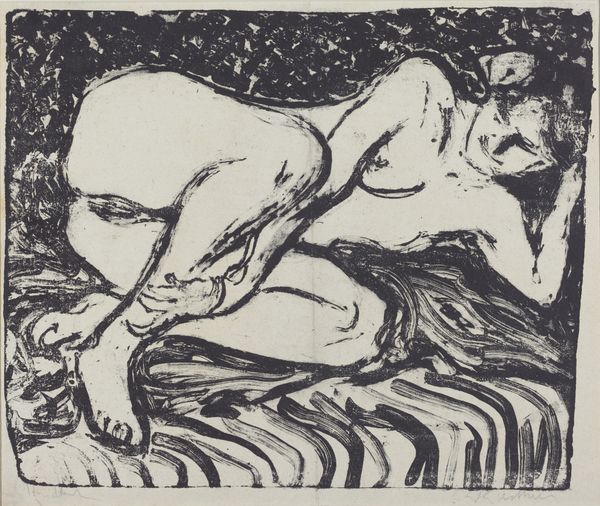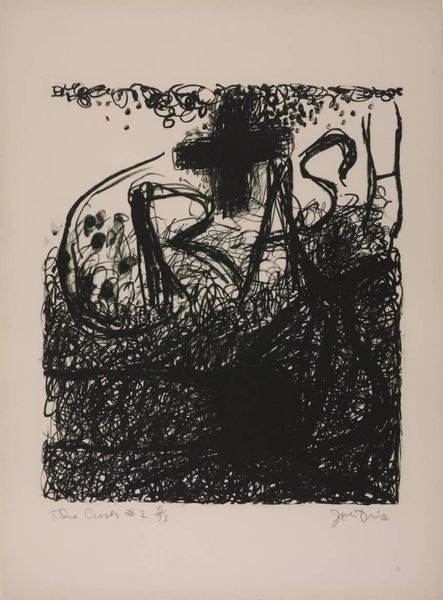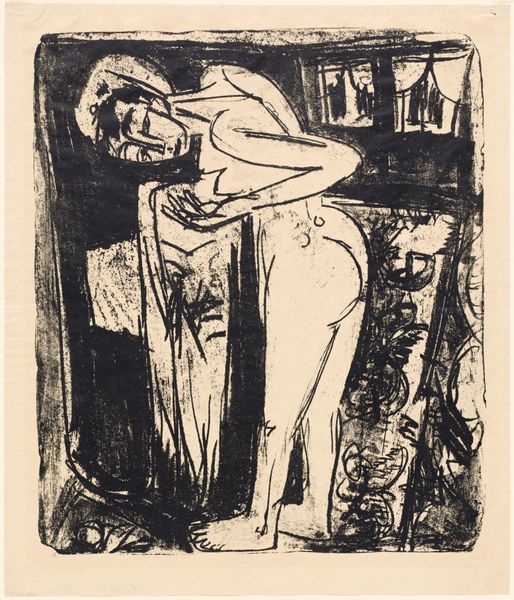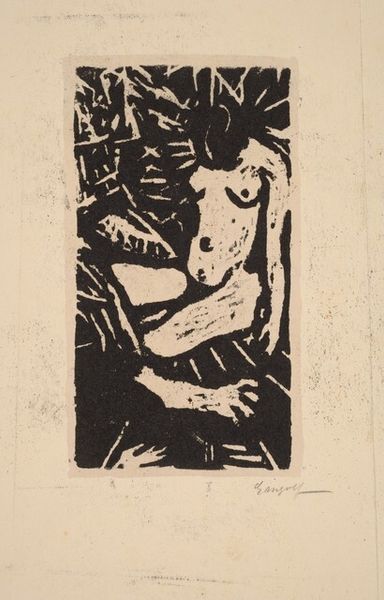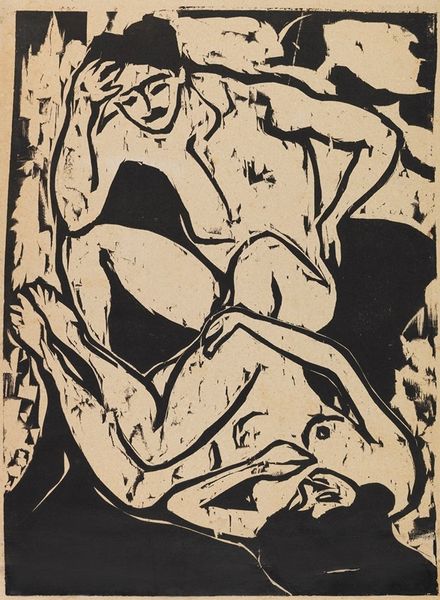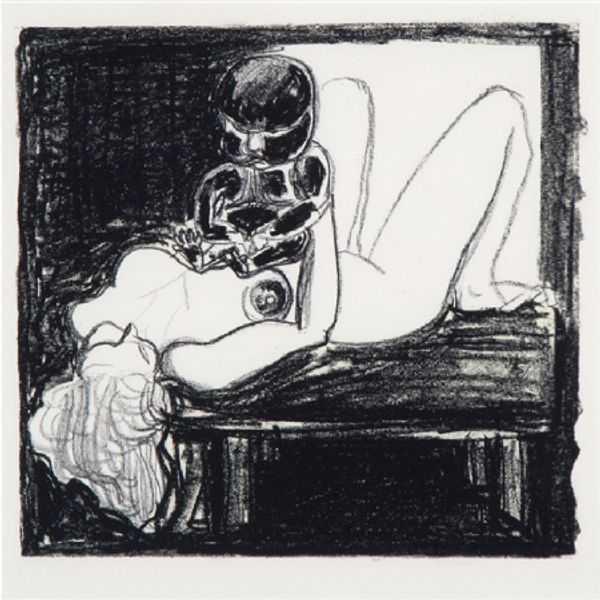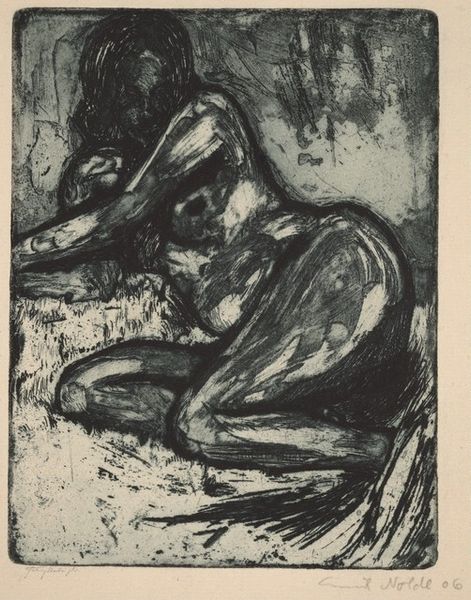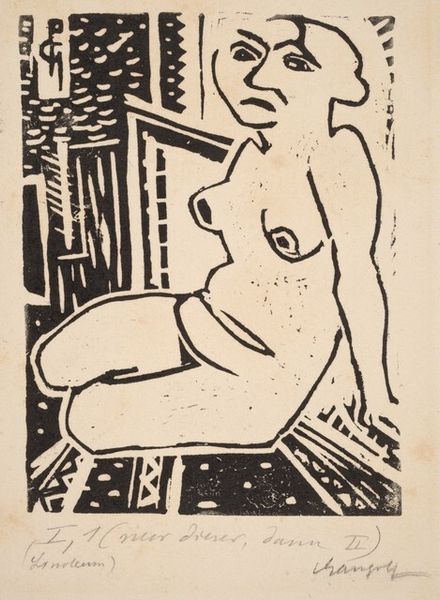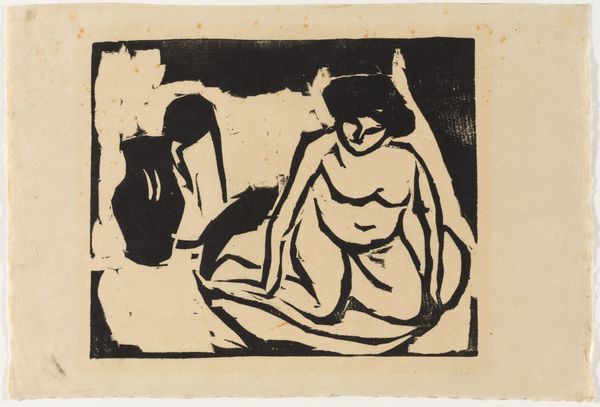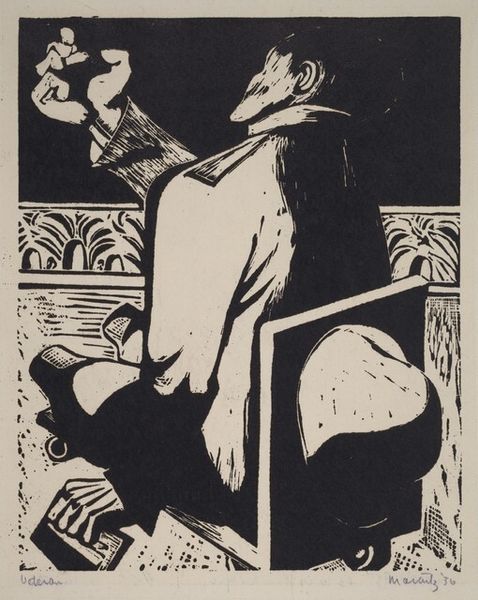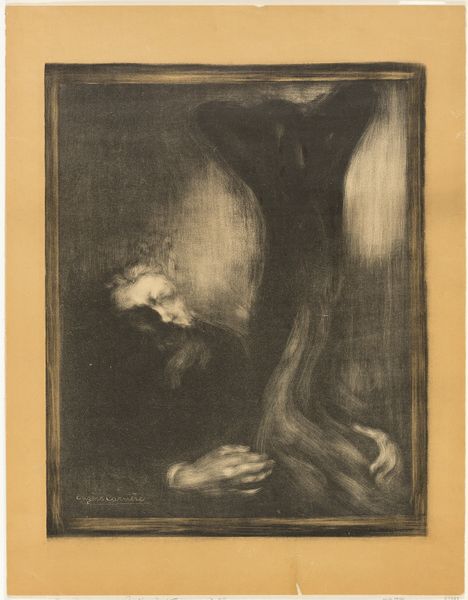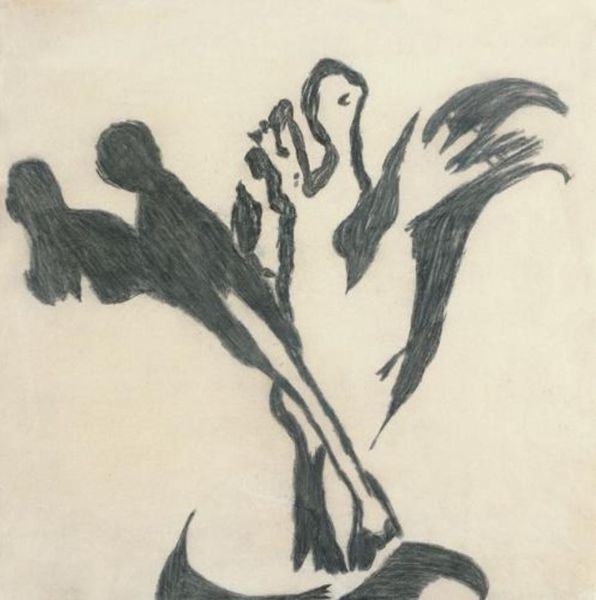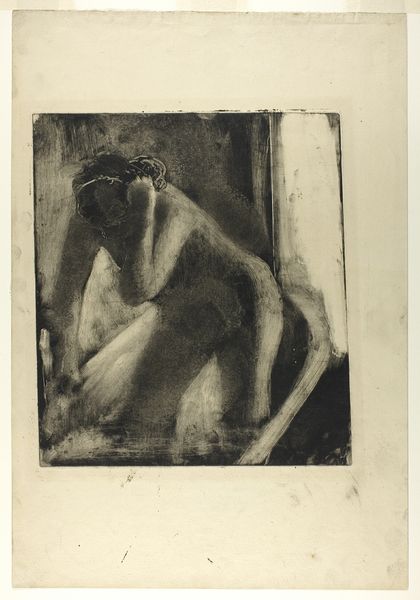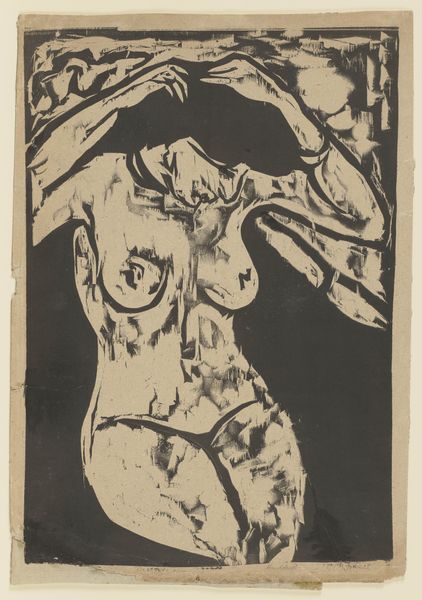
drawing, print, ink, woodcut
#
portrait
#
drawing
# print
#
caricature
#
figuration
#
ink
#
ink drawing experimentation
#
pen-ink sketch
#
expressionism
#
woodcut
#
nude
Copyright: Public Domain: Artvee
Editor: This is Ernst Ludwig Kirchner's "Nude Girl" from 1906, a woodcut print with bold ink lines. I'm immediately struck by the stark contrast between light and dark, which creates a sense of unease. What visual echoes or cultural memories does this piece bring to mind for you? Curator: I see a direct confrontation with the symbol of the idealized female nude. For centuries, that image was carefully constructed and controlled. Kirchner's raw, almost brutal depiction shatters that carefully built artifice, echoing the shift happening in society itself. The sharp angles and deep blacks speak to a psychological anxiety simmering beneath the surface of early 20th-century life. What do you think of her gaze? Editor: It's unsettling! She's looking directly at us, but her expression is hard to read. It feels challenging, almost accusatory. Curator: Precisely! Consider how the traditional nude often averts her gaze, inviting the viewer's consumption. Here, the artist is deliberately denying that access. This is a conscious re-framing, imbuing the figure with an almost confrontational power, reflecting anxieties around the changing roles of women and questioning established power structures in society. How does this subversion of the traditional nude connect with other Expressionist works of the time? Editor: That makes so much sense! Now I see the print not just as a representation of a nude, but as a symbolic statement. I am going to have to revisit how symbols transform, or get rejected over time! Curator: Exactly. The image, its symbolism, is far from static; it is dynamic. This print offers us not just beauty, but discomfort and self-reflection, reminding us of the cultural and emotional power images hold.
Comments
No comments
Be the first to comment and join the conversation on the ultimate creative platform.
